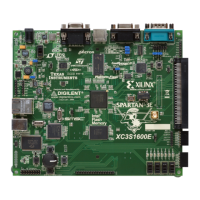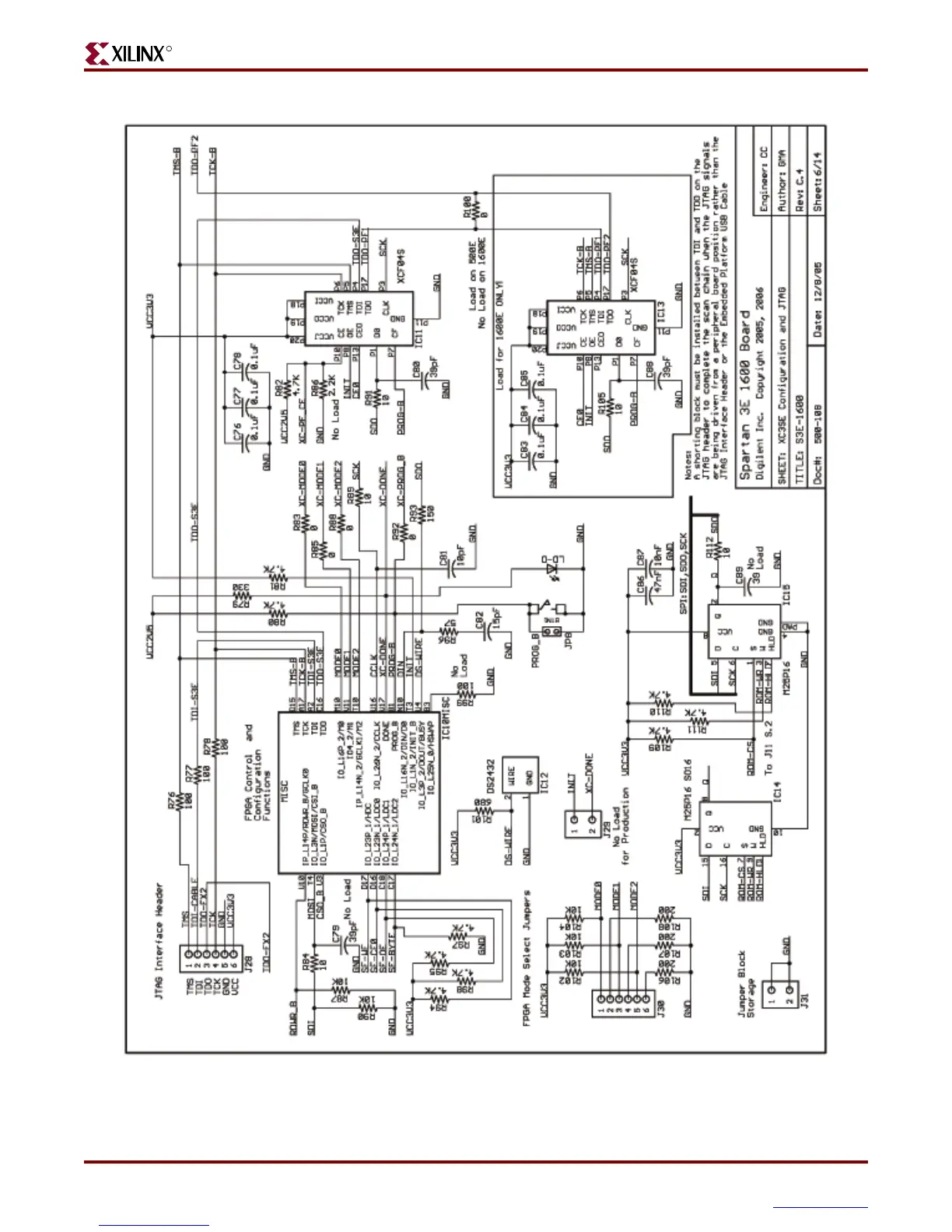MicroBlaze Development Kit Spartan-3E 1600 Edition User Guide 143
UG257 (v1.1) December 5, 2007 www.xilinx.com
FPGA Configurations Settings, Platform Flash PROM, SPI Serial Flash, JTAG Connections
R
Figure 18-5: Schematic Sheet 6
UG257_A05_060606

